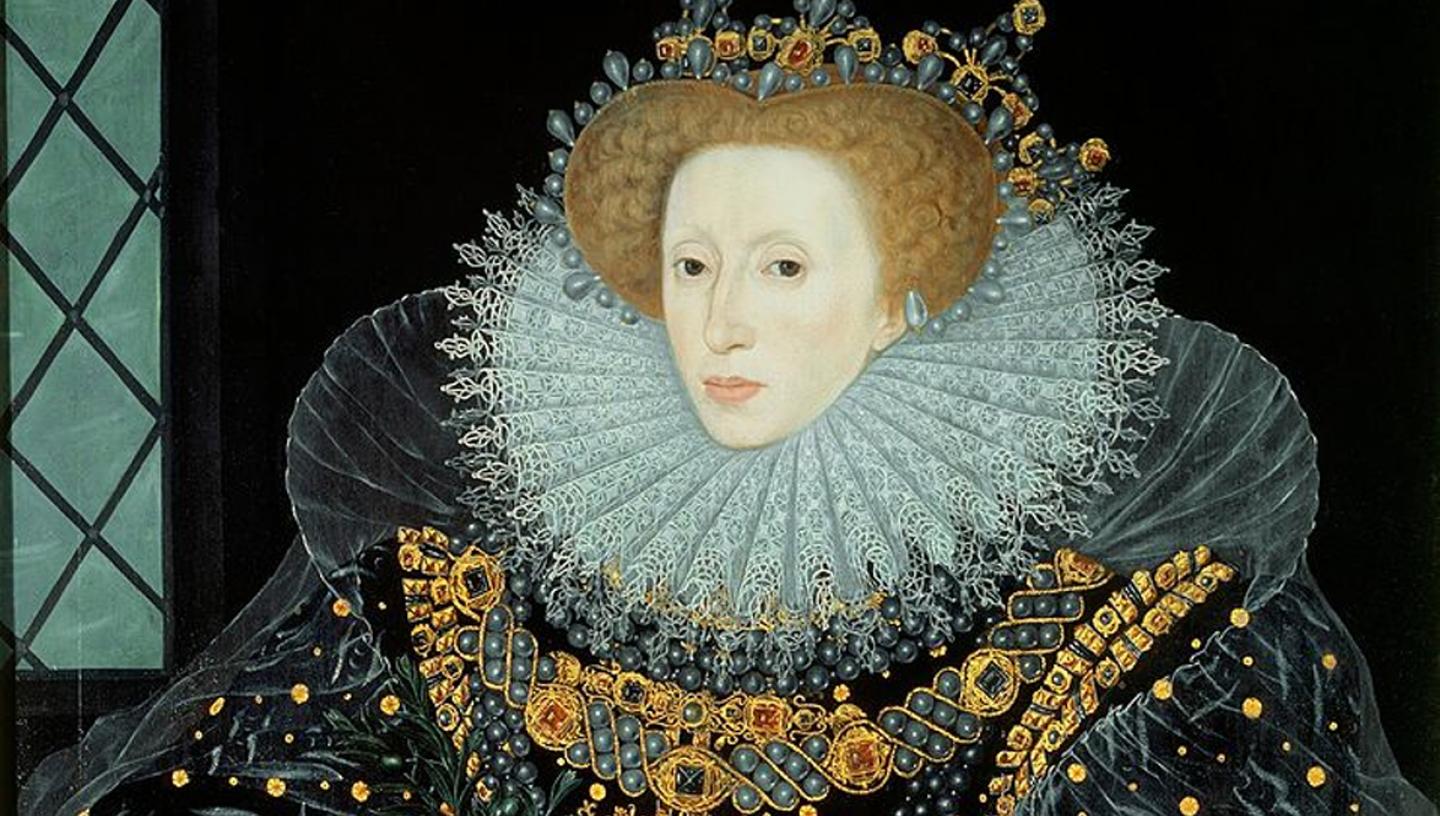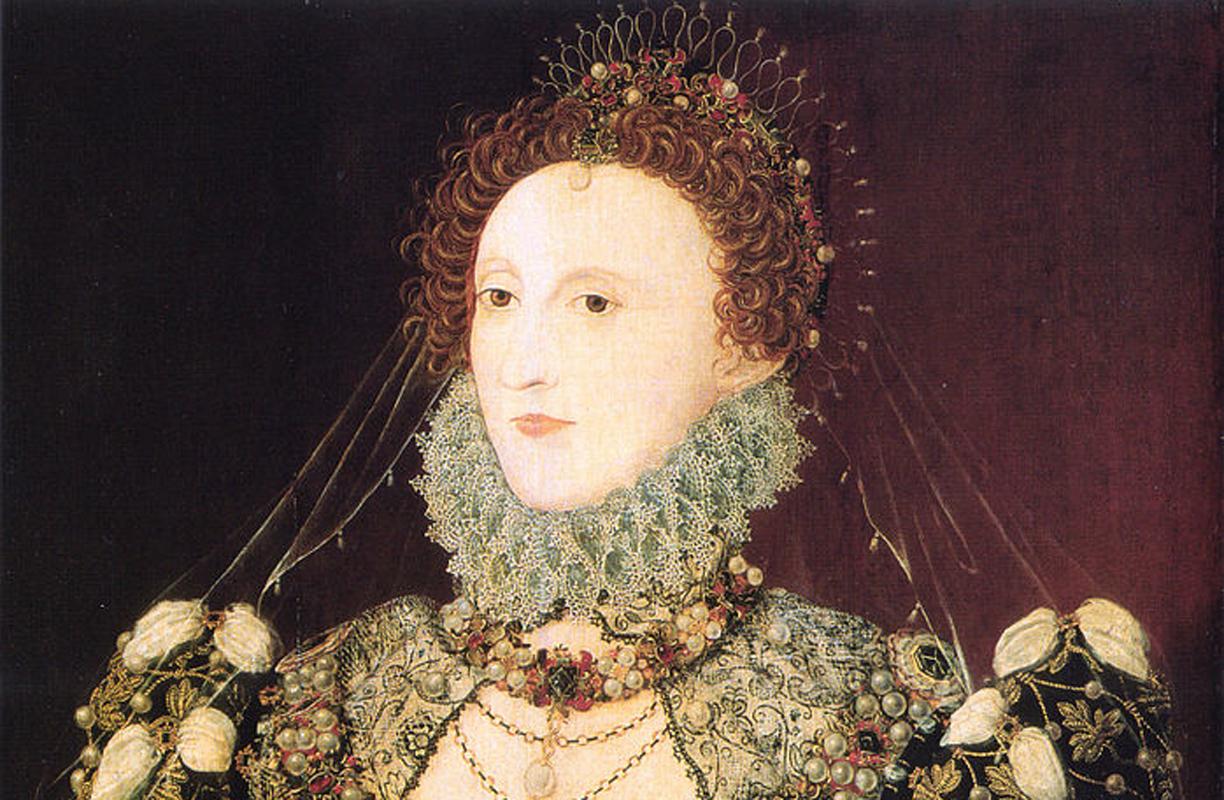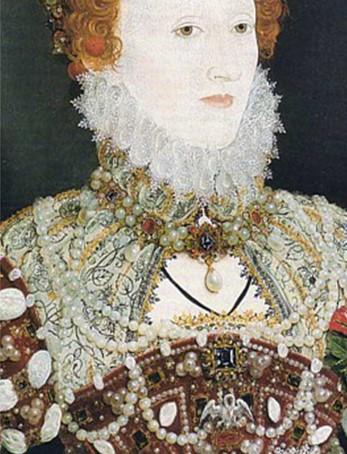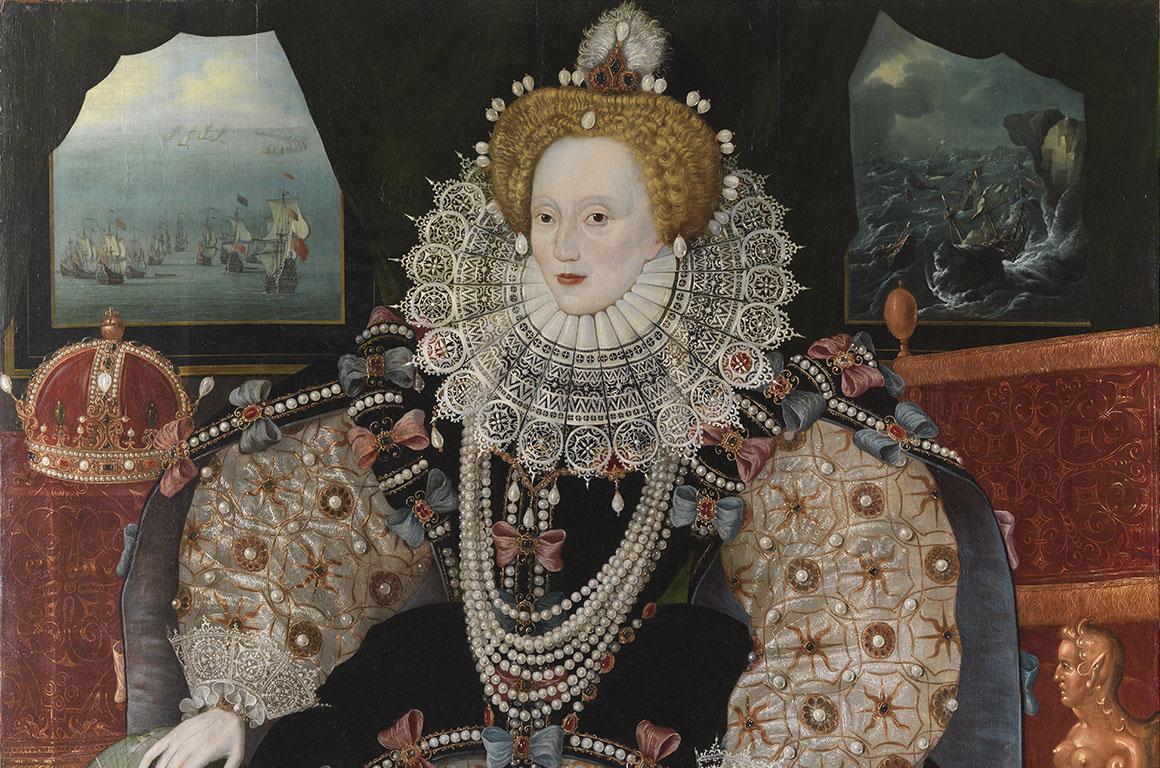
Portraits of Queen Elizabeth I
Early portraits of Queen Elizabeth I stress her God-given right to rule. By her death she symbolised national unity.
Elizabeth was unmarried and childless when she succeeded Mary I on 17 November 1558. Mary, the first queen of England, had also been unmarried at her accession.
Mary, a devout Roman Catholic, reversed the Reformation started by Henry VIII, returning church power to Rome and enforcing a campaign of harsh persecutions for those who did not conform. Mary always put principles first and during her reign about 300 people were burned at the stake for being 'heretics', earning her the name 'Bloody Mary'.
Early portraits: Elizabeth’s God-given right to rule
For much of her reign, Queen Elizabeth I wanted to convince her subjects that a woman could rule and rule well. Determined to rule by head over heart, she favoured considered advice over unwavering principles and supported moderation and compromise over extremism and fanaticism.
Reflecting the concerns of Queen Elizabeth I and her government, early portraits of the Queen stress her God-given right to rule and assert her legitimacy as the rightful heir to the throne. They draw on the Tudor heritage, particularly that of Henry VII and the unification of the country after the Wars of the Roses.
Propaganda portraits
During the 1570s, portraits of Elizabeth began to function more overtly as propaganda or as homages to the Queen. Unlike her predecessors, Queen Elizabeth I never appointed a royal painter. Instead, much of the construction of her image was undertaken by artists and the patrons who commissioned the portraits.
In portraits of the Queen her femininity was often transcended to project an image of female power. To do so, a whole host of symbols and emblems familiar to the public were appropriated from biblical, classical and mythological sources. This pleased Elizabeth, who was herself a highly educated woman with a profound sense of the authority of history.
The ‘Virgin Queen’
Elizabeth's marital status was an issue throughout her reign. Unable to marry Robert Dudley (the man of her choice), without tarnishing her reputation or causing national divisions, Elizabeth remained unmarried. After the failure of the last serious proposal in the early 1580s, Elizabeth's evasion of marriage was portrayed as an act of self-sacrifice: a selfless move that kept England out of the foreign entanglements and compromises that accompany royal marriage.
Virginity was a courtly ideal with romantic connotations. In her youth, Elizabeth's virginity had been played-up for its connotations of purity, innocence and chastity, making her an attractive marriage proposition. As she aged, these qualities were fused with that of maternal sacrifice for the greater good, lending an air of holiness to her calling and inviting comparisons with the Virgin Mary.
Over time, Elizabeth's virginity became a symbol of national independence, placing her as the mother of her nation - a queen who put her subjects' welfare before her own desires.
The cult of the ‘Virgin Queen’ was in full swing during the 1580s and 1590s and demand for portraits of Queen Elizabeth increased. During this time, artists began to use other symbols to express her virgin status. Elizabeth was often presented as the personification of mythological or literary figures and her appearance became increasingly magnificent as she was transformed into an emblem of beauty and virtue.
The cult of Elizabeth
With the defeat of the Spanish Armada in 1588 the cult of Queen Elizabeth I reached new heights and demand for her image soared. Very few artists had the opportunity to paint the Queen from life, so most worked from approved 'face patterns' derived from official portraits which presented an eternally youthful queen.
In paintings she was surrounded by objects full of meaning, known as 'attributes'.
Elizabeth was also honoured in other mediums. Musical compositions by Thomas Tallis and William Byrd were dedicated to her, likewise poems by Ben Jonson, Sir Walter Ralegh and Edmund Spenser.
The mythologising of Elizabeth and her reign continued long after her death and she became an icon of national integrity and unity.
Queens Victoria and Anne were inspired by the way Elizabeth presented herself as a symbol of power.
Elizabeth I's mask of youth
What was Elizabeth I's mask of youth?
Watch more in this film series
Elizabeth I, like all monarchs, used portraiture as a form of propaganda. Throughout her reign she wanted to be seen as a Renaissance prince, equal to any of her Continental male counterparts.
In order to secure her country, Elizabeth needed to be seen as a strong leader, capable of resisting threats of invasion. As a queen with no lineal heir, Elizabeth’s youth was integral to her strength - an ageing queen with no successor did not inspire faith in the Court or the country.
In 1596 there was an order to the Privy Council demanding that public officers seek out ‘unseemly’ portraits of the Queen.
In the 1970’s art historian Sir Roy Strong coined the term ‘The Mask of Youth’ to describe Queen Elizabeth I’s appearance in portraits in the latter years of her reign.
Many see this as a reference to the layers of white make up worn by women at the Tudor Court. Depictions of the Virgin Queen in film and drama often focus on the grotesque nature of the thick makeup. Prior to the 1970s, this was not such a popular trope but has become the defining feature of Elizabeth in popular culture.
The mask of youth created a sense of timelessness, but also allowed Elizabeth control over her image. It was most likely propaganda, rather than a reference to the makeup which was, after all, the trend of the time anyway.
The Armada Portrait
Recently saved for the nation, the Armada Portrait commemorates the most famous conflict of Elizabeth I's reign – the failed invasion of England by the Spanish Armada in summer 1588. This iconic portrait is now back on public display in the Queen's House after careful conservation.
Find out more and visit The Armada Portrait
Using our collections for research
The collections at Royal Museums Greenwich offer a world-class resource for researching maritime history, astronomy and time.


